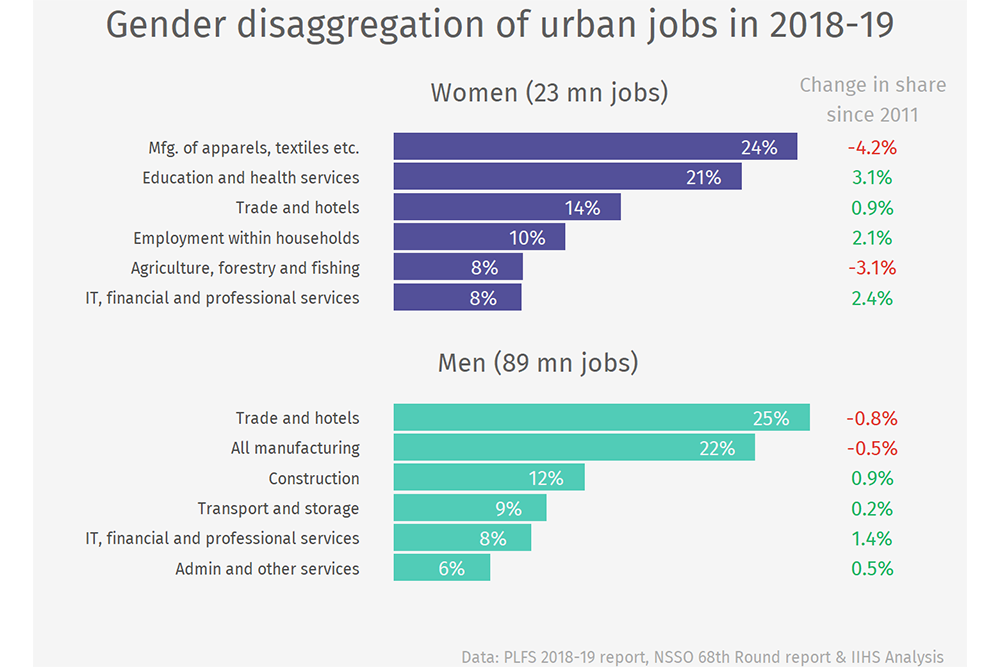More Services Sector Jobs In Cities
Women tend to be concentrated in apparel and textile manufacturing and in services like education and health, while men are concentrated in the trade and hotels sector, and manufacturing including in heavy industry.

Nearly two in three urban jobs are concentrated in services (41%) and manufacturing (22%) in 2018-19 (trade at 19%, construction at 10%, agriculture at 6% and electricity, water and gas at 2% form the rest). When these numbers are compared with the urban jobs in 2011, it is clear that the share of manufacturing has declined by 1.2 percentage points (1.2 million jobs) and the share of services has increased by 2.4 percentage points (2.9 million jobs).
In 2018-19, urban jobs engaged 23 million women and 89 million men. Gender disaggregation of jobs in urban areas reveals particular trends. Women tend to be concentrated in manufacturing of apparels and textiles and in services like education and health, while men are concentrated in the trade and hotels sector and also in manufacturing in various sectors including heavy industry and textiles.
Not only do significantly fewer women of working age actually want or hold jobs in urban areas, they often work in jobs of poorer quality with wide income variability, lack of benefits and lack of safety provisions. In addition to addressing these critical areas of concern, the question of women's participation in the urban workforce is also contingent on factors such as providing child-care facilities at the workplace and ensuring availability of safe public transport.
The author acknowledges the contribution of Divij Sinha, IIHS Urban Informatics Lab, who helped with data visualisation.
Here are other DataViz of the series:
How Non-Agricultural Workers Are Spread Out Across The Country
Manufacturing Is Concentrated In A Few Districts
Construction Absorbs Low-Skilled Casual Labour?
MSMEs As Large Employment Creators
We welcome feedback. Please write to respond@indiaspend.org. We reserve the right to edit responses for language and grammar.


